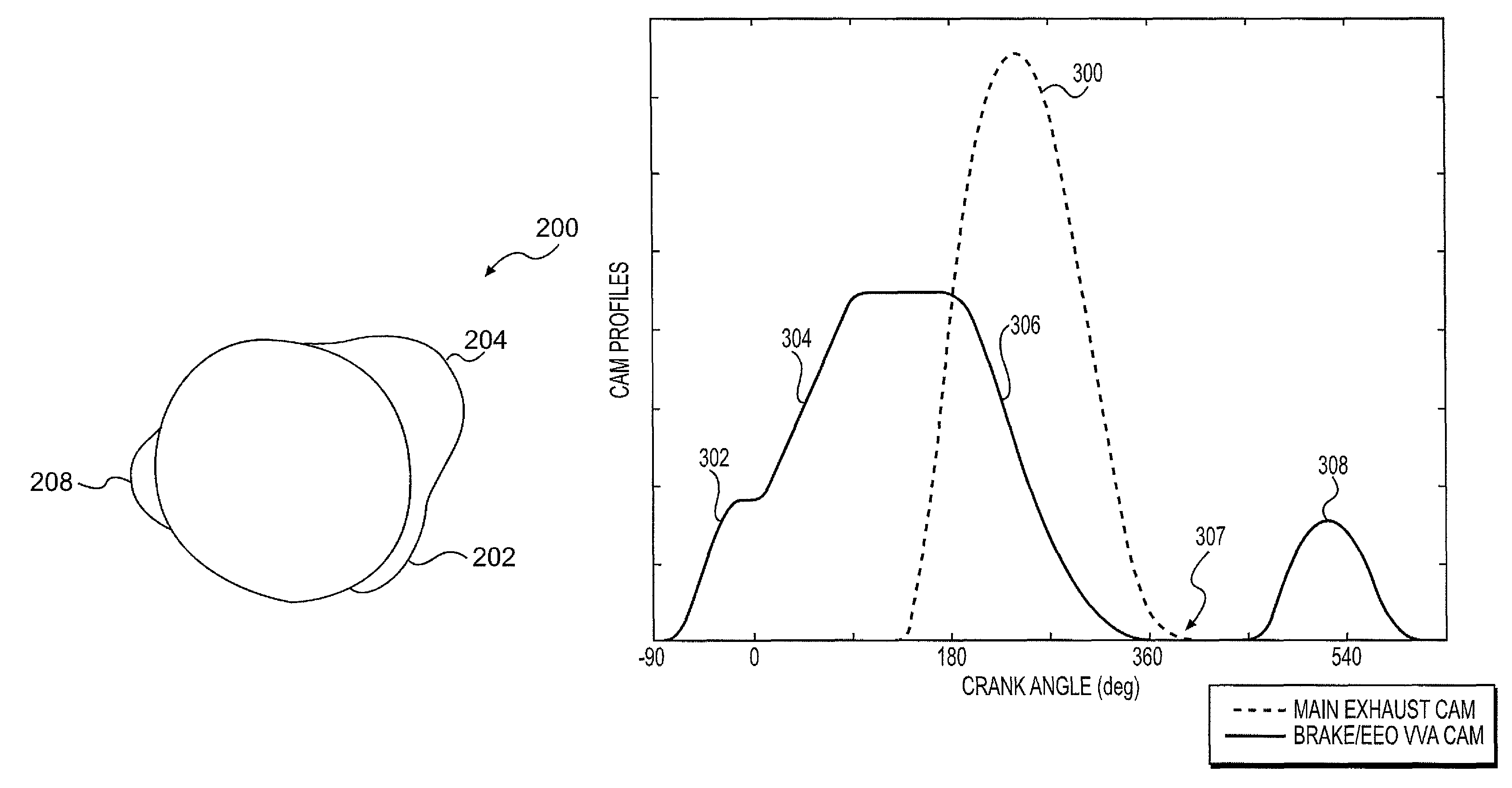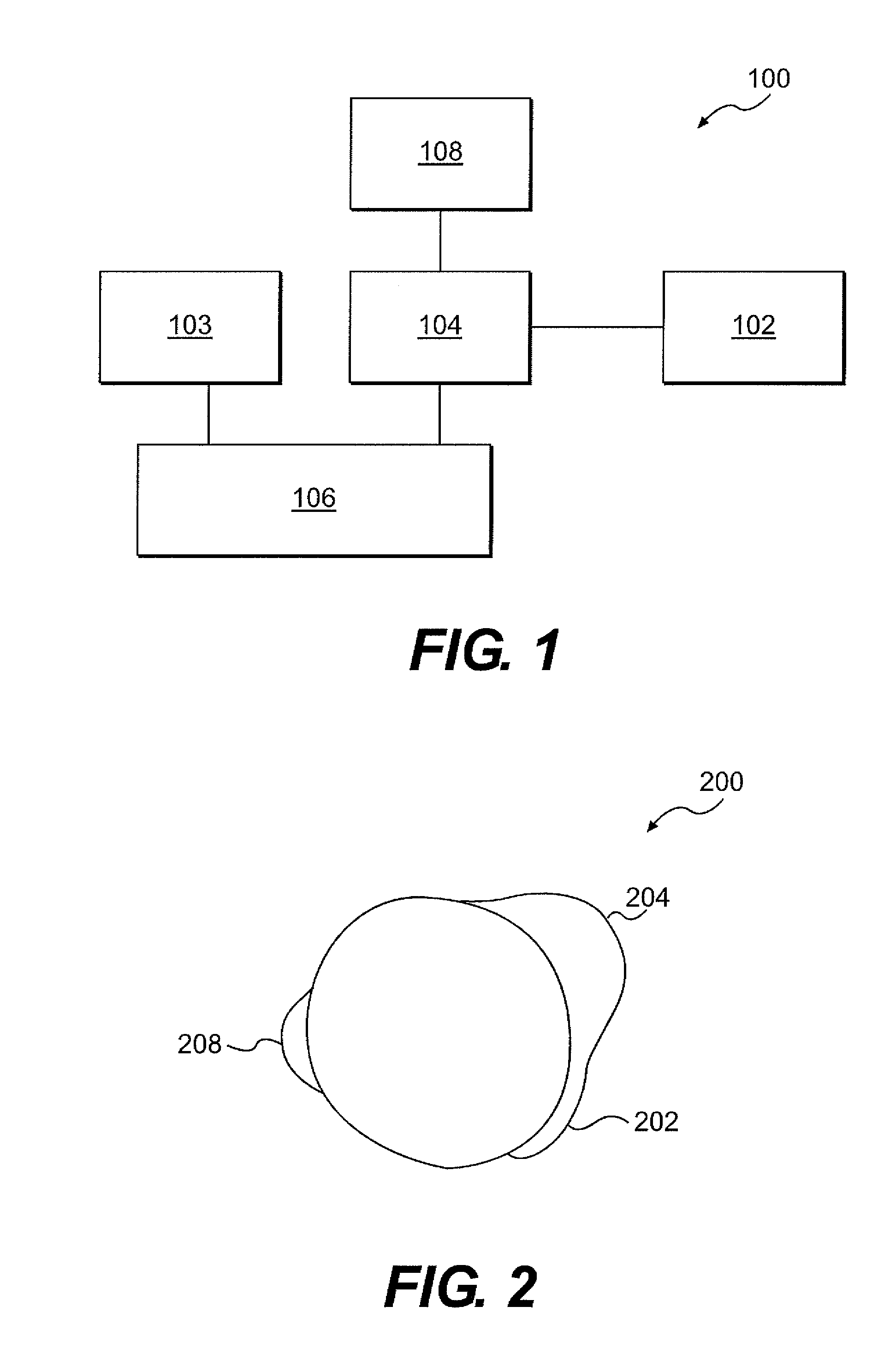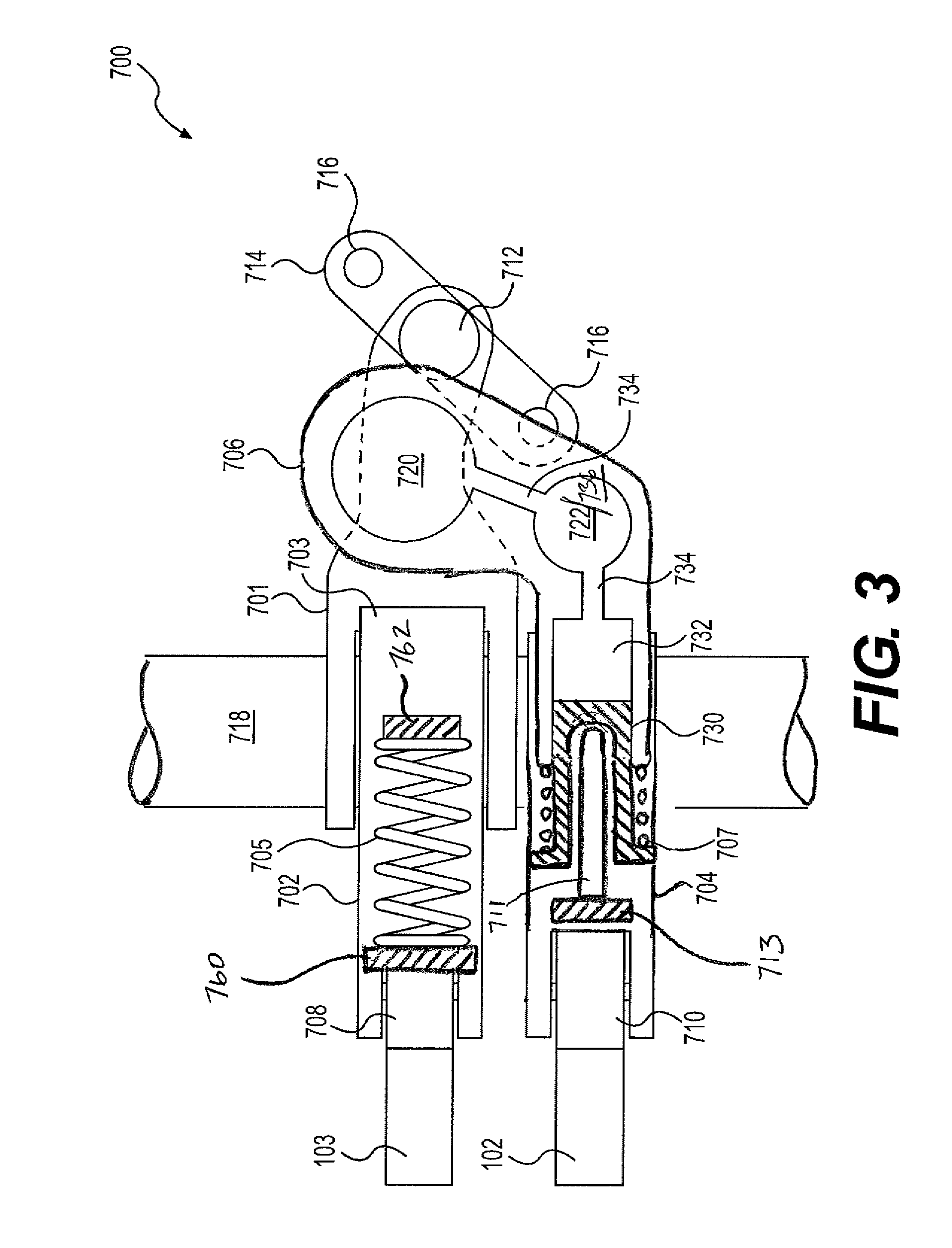Lost motion variable valve actuation system for engine braking and early exhaust opening
a technology of engine braking and valve actuation system, which is applied in the direction of valve details, valve arrangements, valve drives, etc., can solve the problems of unfavorable valve actuation, increased force required to open the exhaust valve, and reduced load on the exhaust valve opening mechanism used
- Summary
- Abstract
- Description
- Claims
- Application Information
AI Technical Summary
Benefits of technology
Problems solved by technology
Method used
Image
Examples
first embodiment
[0039]FIG. 1 is a block diagram that illustrates a valve actuation system 100 in accordance with the present invention. The valve actuation system 100 may include a first motion imparting means 102, such as a cam with one or more lobes or bumps, operatively contacting a lost motion system 104, which in turn may be operatively connected to one or more engine valves 106. The valve actuation system may further include a second motion imparting means 103 operatively connected to the one or more engine valves 106. It is appreciated that any number of valve train elements, such as push tubes, rocker arms, and or valve bridges may be provided between or as part of the first and second motion imparting means 102 and 103, the lost motion system 104, and the engine valves 106, without departing from the intended scope of the present invention. The first motion imparting means 102 may preferably include both a early exhaust valve opening lobe or bump, a compression release lobe or bump, and op...
second embodiment
[0043]FIG. 3 is a schematic top view in partial cross section of variable valve actuation system 700 in accordance with the present invention. The variable valve actuation system 700 may include first and second valve train assemblies extending between the first and second motion imparting means, 102 and 103, respectively, and the exhaust valves 716. The first valve train assembly may include a first half (or main exhaust) rocker arm 701 pivotally mounted on a rocker shaft 718, and a second half rocker arm 702 pivotally mounted on the rocker shaft directly behind the first half rocker arm which together comprise an articulated rocker arm. The first half rocker arm 701 may include an elephant foot or other valve bridge contacting portion 712 adapted to apply a valve actuation motion to the engine valves, preferably exhaust valves, 716 through a valve bridge 714.
[0044]The second half rocker arm 702 may include a valve end portion 703 adapted to apply a pivoting motion to the first hal...
third embodiment
[0048]FIG. 6 is a schematic top view of a variable valve actuation system 700 in accordance with the present invention, in which like reference characters refer to like elements. The first valve train assembly of the variable valve actuation system 700 may include a first (or main exhaust) rocker arm 1002 pivotally mounted on a rocker shaft 718. The first rocker arm 1002 may include a cam roller 708 biased by a spring 705 which acts by pushing from a fixed stop 762 against a contact surface 760 provided on the first rocker arm so that the cam roller is maintained in relatively constant contact with a second motion imparting means 103, such as a cam provided on a camshaft. The first rocker arm 1002 may include a valve actuation end 1004 adapted to contact and act on a valve bridge 714 which in turn may actuate engine valves such as exhaust valves 716.
[0049]The second valve train assembly of the variable valve actuation system 700 shown in FIG. 6 may further include a third half rocke...
PUM
 Login to View More
Login to View More Abstract
Description
Claims
Application Information
 Login to View More
Login to View More - R&D
- Intellectual Property
- Life Sciences
- Materials
- Tech Scout
- Unparalleled Data Quality
- Higher Quality Content
- 60% Fewer Hallucinations
Browse by: Latest US Patents, China's latest patents, Technical Efficacy Thesaurus, Application Domain, Technology Topic, Popular Technical Reports.
© 2025 PatSnap. All rights reserved.Legal|Privacy policy|Modern Slavery Act Transparency Statement|Sitemap|About US| Contact US: help@patsnap.com



